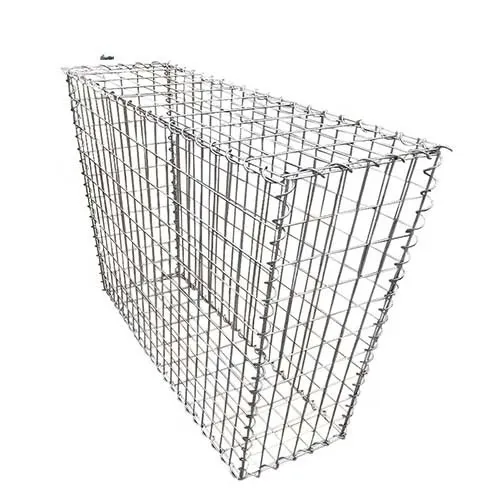-
 Phone:
Phone: -
 Email:
Email:

Exploring the Benefits and Techniques of Rock Netting for Erosion Control
The Impact and Benefits of Rock Netting in Modern Construction
Rock netting, often referred to as rockfall netting or rockfall protection netting, is an essential element in modern engineering and construction, especially in areas prone to geological instability. The technique involves the installation of mesh nets over potentially hazardous rock slopes to prevent rockfalls and ensure the safety of both infrastructure and human life. This article delves into the advantages, applications, and methods of implementing rock netting in various environments.
Understanding Rock Netting
At its core, rock netting is designed to catch and stabilize loose rocks that could otherwise fall from steep inclines, cliffs, or mining operations. Made from durable materials such as high-tensile steel wire, rock nets act as a barrier that can contain falling debris, thus minimizing the risk of accidents on roads, railways, and buildings located below potential rockfall zones.
Advantages of Rock Netting
1. Safety The primary advantage of rock netting is the enhanced safety it provides. By preventing rocks from becoming projectiles, netting systems protect vehicles, pedestrians, and infrastructure from the dangers of falling debris. This is especially crucial in mountainous regions or areas with frequent seismic activity.
2. Cost-Effectiveness Implementing rock netting can be more economical than other forms of rock stabilization, such as rock bolting or complete slope removal. While the initial investment for materials and installation can be significant, the long-term savings from reduced damage and injury claims can outweigh these costs.
3. Environmental Protection Rock netting is less invasive compared to other stabilization methods. It preserves the natural landscape and ecosystem by allowing vegetation to grow through the netting and maintaining the geological integrity of the slope. This is particularly important in ecologically sensitive areas where traditional stabilization methods might lead to significant environmental degradation.
4. Versatility Rock netting systems can be customized to meet the specific needs of a project. They can be adapted to various terrains, capacities, and environmental conditions, making them suitable for a range of applications from highways and railways to recreational parks and mining sites.
5. Reduced Maintenance Once installed, rock netting systems typically require minimal maintenance. Regular inspections ensure their integrity, but the robust materials and designs employed contribute to their longevity in harsh weather conditions.
Applications of Rock Netting
Rock netting is employed in diverse settings, notably in construction projects near mountainous areas, cliff sides, or active quarry sites. The following are some common applications
rock netting

- Transportation Infrastructure Highways and railroads that traverse hilly or rocky terrain are prime candidates for rock netting installations. These protections help ensure safe transit by mitigating the risks of rockfalls during adverse weather conditions.
- Mining Operations In the mining industry, rock netting is vital for stabilizing slopes around open pit mines and protecting workers from rock hazards. It enhances the safety of mining operations while facilitating the efficient extraction of minerals.
- Geotechnical Projects Engineers often use rock netting in various geotechnical applications, including slope stabilization and erosion control. The nets can be integrated with other systems such as retaining walls or soil stabilization techniques to provide comprehensive protection for infrastructure.
Installation Methods
The process of installing rock netting involves several key steps
1. Site Assessment Engineers conduct a thorough geological assessment to evaluate the risk of rockfalls and the required netting specifications.
2. Selection of Materials Depending on the location and potential risks, suitable netting materials and mesh sizes are chosen to effectively contain falling rocks.
3. Installation The installation typically involves anchoring the netting to the slope using rock bolts and tensioning it to ensure adequate support.
4. Regular Monitoring After installation, periodic inspections are essential to ensure the continued effectiveness of the rock netting, especially after heavy rainfall or seismic events.
Conclusion
In summary, rock netting stands out as a vital solution in mitigating the risks associated with rocky terrain and geological instability. Its multifaceted advantages—ranging from enhanced safety to environmental protection—make it an indispensable technique in modern construction and engineering. As the demand for infrastructure expands in challenging environments, the role of rock netting will undoubtedly continue to grow, underscoring its importance in promoting safer, sustainable development.
-
Wire Mesh for Every Need: A Practical SolutionNewsJul.25,2025
-
Steel Fences: Durable, Secure, and Stylish OptionsNewsJul.25,2025
-
Roll Top Fencing: A Smart Solution for Safety and SecurityNewsJul.25,2025
-
Cattle Farm Fencing Solutions for Maximum SecurityNewsJul.25,2025
-
Affordable Iron Binding Wire SolutionsNewsJul.25,2025
-
Affordable Galvanized Wire SolutionsNewsJul.25,2025
-
Wire Hanger Recycling IdeasNewsJul.25,2025








